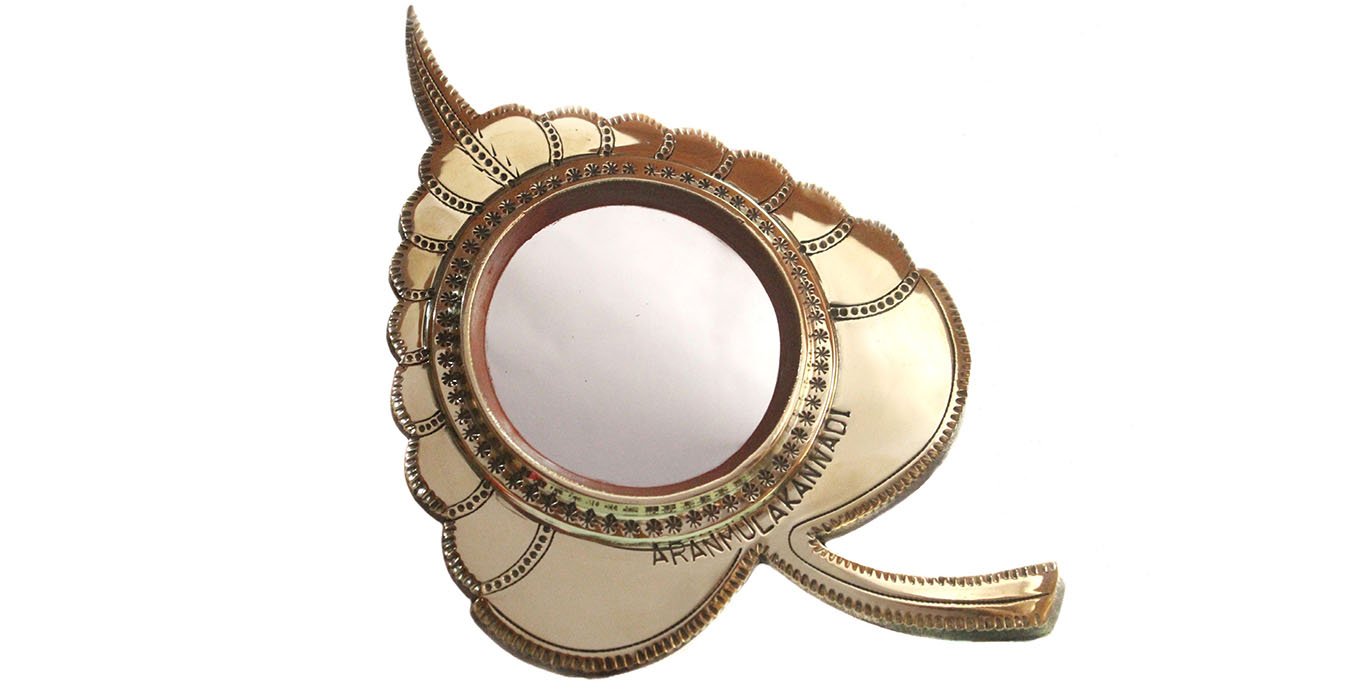The Mystic Mirror of Aranmula
Text: Jethro Pictures: Gokul Ramachandran
India is famous for the miscellany in culture and tradition. The southern states of India demand exception in their customs and traditions of which, Kerala is noteworthy. Aranmula is a temple town in the state of Kerala. It is situated on the banks of the holy river Pamapa. A cherished trade post and a center of pilgrimage, the river was the paramount means of transport. Aranmula is a global heritage site enlisted by the United Nations. It is a sacred location for the Hindus in Kerala. The annual snake boat race on the Pamapa River invites devotees and fascinates international tourists.
Principally built in wood, the palace at Aranmula is an architectural marvel. It has a history of more than two hundred years. Aranmula comprises the central temple of Lord Parthasarathy. It is to this temple that the provenance of the mystic mirror is related. It is called ARANMULA KANNADI.
Kannadi is the Malayalam word for mirror, and Aranmula- the place where it is manufactured. Hence the name Aranmula Kannadi. A handmade metal alloy mirror, it is an exclusive product of Aranmula.
A metal alloy is used to create this mirror. The alloy is formed into a thin plate and polished for a few days until the surface gets smooth and shiny. The artisans polish it further until it portrays the property of a mirror and displays their own reflection. Distinguishable from normal glass mirrors, it is a front surface reflection mirror, which excludes secondary reflections and aberrations, typical in back surface mirrors. A metal frame, fashioned by skilled artisans, augments the attractiveness and pulchritude of the mirror. The metal mirror is an unparalleled piece of craft. The secret of its composition is what makes it truly mesmerizing. It is considered a Viswakarma family secret. The craftsmen believe that the formula of the alloy used to make the metal mirror is divine. Metallurgists propose that the alloy is a mix of copper and tin. This technique of mirror making and the mystery of its production is a hierarchical gift handed over through generations. The ratios of different metals used were acquired, a few centuries ago, after analyzing the crown which was preserved in the Parthasarathy temple.
Parthasarathy temple, also known as Aranmula temple, is dedicated to Lord Krishna. It is one of the five ancient shrines in the Chengannoor area of Kerala. The temple is constructed in Kerala style architecture, which is common in all temples in the south Indian state of Kerala. History associates this temple and the Aranmula Kannadi.
Roughly seven generations ago, eight families of experts in temple arts and crafts came to Aranmula from a town in Tamil Nadu – another state of India. The king of Pandalam had summoned these clans to get involved in erecting the Parthasarathy temple. Apart from carrying out their assigned chore, these craftsmen made cooking vessels and bells by casting a copper-based alloy. Ornaments such as bangles and rings were also molded. While working with certain metals, the artisans caught sight of the reflective property of one particular alloy. The alloy was polished for several days. The result was awe-inspiring. The reflecting property of the polished metal was then exploited for making mirrors.
These excellent metal mirrors are a proof of Kerala’s affluent cultural and metallurgical traditions. They have ordinate historical and cultural value.There is a legend associated with the Aranmula Kannadi here. A few centuries back, the cracked crown of the deity in Parthasarathy temple had to be replaced. The chief of the bronze smith clan was called at the king’s behest. He was commanded to mold a new crown within three days. Meager materials and a paucity of the time were two main problems he faced. Distressed, the man left the palace. He returned home and conversed with his wife about his anxiety. They prayed to Devi (goddess). It is claimed that in their sleep, the goddess manifested in the wife’s dream and disclosed the secret proportions of a brass alloy that would shimmer like a mirror.
The crown made out of the combination turned out to be a marvel of art and craft. Gleaming with rare luster, the crown acquired the quality of a mirror when cleaned.
The crown was safeguarded in the Parthasarathy temple till 1946. The same combination of metals is used to make Aranmula Kannadi. The mirrors are developed by one extended family in Aranmula.
Ashtamangalyam, an array of eight auspicious objects, is of prodigious importance among Hindu families in Kerala. Aranmula Kannadi is observed as one of the eight entities. Ashtamangalyam plays an immense role in the entry of a bride at a wedding venue.
The mirror escorts good luck. Placing an Aranmula Kannadi in one’s house fetches prosperity and happiness, as it is believed to be the mirror of the goddess. The cryptic alloy is responsible for the distortion-free images. Mediocre glass mirrors reflect from the mercury polished on the back surface. Whereas Aranmula Kannadi made of metal alloy reflects from its polished front surface.
The Aranmula Kannadi is set to embellish the magnificence of a house. The handicraft is as radiant and captivating as the gleaming of pure gold. It is also used to adorn festivals and ceremonies. The absolute finishing and alluring looks of the mirror makes it an exquisite gift for any occasion. Honorable former Indian President APJ Abdul Kalaam was presented with an Aranmula Kannadi. A forty-five centimeters tall Aranmula Kannadi is preserved at the British Museum in London. Due to its enigmatic composition and unparalleled attractiveness, it is definitely worth owning an Aranmula Kannadi.



